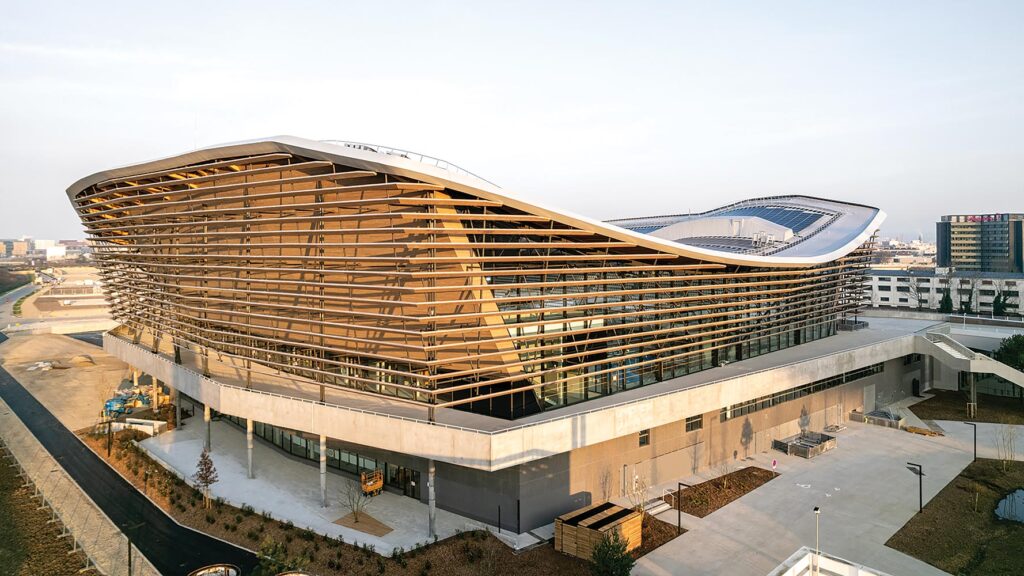Transforming 2024 Paris Olympics: BIM

The Paris 2024 Summer Olympics brought excitement, world-class athletes, and millions of spectators to the City of Light. But what happens to the stunning venues once the celebrations end? Instead of letting these magnificent structures fade into obscurity, Paris is leveraging the power of Building Information Modeling (BIM) to give them new life and purpose.
The Magic of BIM in Renovation
Imagine a construction tool that not only helped build your favorite stadium but can now also help transform it into a vibrant community center, a bustling market, or a beautiful park. That’s exactly what BIM does! Initially designed to create detailed, digital models of the Olympic venues, BIM is now set to play a pivotal role in repurposing these structures for everyday use.
With the wealth of data embedded in the BIM models—from materials used to energy systems—urban planners and architects can quickly envision and execute renovations. They can speed up the process, reduce costs, and enhance the sustainability of these venues. The result? Beautiful spaces that serve the community long after the Olympic flame is extinguished.
Learning from the Past: Why Planning Matters
History has taught us that failing to plan for the post-Olympic life of venues can lead to disappointment. Just look at past Olympics, like those in Athens (2004) and Rio de Janeiro (2016).
- Athens 2004: The Greek capital spent around €10 billion on the Olympics, yet many venues, including the Athens Olympic Sports Complex, have fallen into disrepair and are rarely used. A 2017 report by the European Court of Auditors highlighted that 21 out of 25 venues built for the games were underutilized or abandoned, leading to significant maintenance costs for the city . This scenario served as a cautionary tale about the long-term consequences of inadequate planning for post-Olympic use.
- Rio 2016: Similarly, many of Rio’s Olympic venues have faced a bleak future. The Maracanã Stadium, once a symbol of Brazilian football, struggled to find a sustainable model post-Olympics. The Arena da Amazônia, built for football matches, has been criticized for its poor utilization and high maintenance costs . Reports indicate that many of these venues have become a burden on local budgets instead of contributing to community welfare .
By contrast, the lessons learned from these experiences have paved the way for a more thoughtful approach in Paris. The city recognizes that using BIM can help visualize, plan, and ultimately prevent these pitfalls. By integrating community needs into the renovation process from the start, Paris is not only honoring its Olympic legacy but also enhancing the quality of life for its residents.
A Brighter Future Awaits
As the dust settles from the Paris 2024 Olympics, the real challenge begins: turning once-temporary venues into lasting community treasures. Thanks to the innovative use of BIM, these spaces will be reborn, serving practical purposes and fostering community engagement. Paris is setting an example for future host cities, showing that the Olympic legacy can be one of sustainability, innovation, and forward-thinking urban development.
In a world where sustainability is increasingly important, the approach taken by Paris and its use of BIM could inspire cities around the globe. So, the next time you see a spectacular Olympic venue, think about its potential beyond the games—it might just be a future hub of community life!
References
- European Court of Auditors. (2017). Special Report: The Olympics Games: Did the benefits to the host city meet expectations?
- Duarte, M. (2019). Rio 2016 Olympics Venues Left to Waste: A Year of Abandonment*. The Guardian.
- Schneider, L. (2020). Brazil’s Olympic Venues Struggle to Find a Purpose Post-Games*. BBC News.
